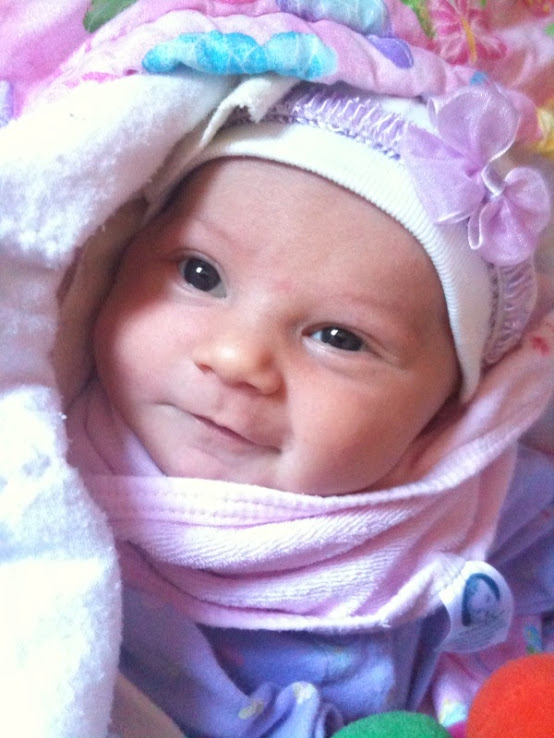All nursing mothers worry about how their food and drink affect their child. One big concern is alcoholic beverages. For years mothers have been told to avoid even a sip of alcohol. However, many women have heard stories of their ancestors drinking beer to increase milk production and just for enjoyment. As a new mother with a scientific mind (and ready access to forensic testing equipment), I decided to see who's idea was correct - the teetotalers or our ancestors.
Method:First I took a sample of my milk (about 1 mL) prior to drinking any alcoholic beverage. I expressed the milk mid-nursing session to ensure I had a goodly portion of fore and hind milk. After completing the nursing session, I mixed myself an alcoholic beverage consisting of 2 oz of 80 proof (40%) vodka in 10 oz of soda (Sprite). I proceeded to drink the entire 12 oz in about 30 minutes. About 30 minutes after finishing (1 hour after beginning to drink), I expressed some milk (about 1 mL) and labeled it 'immediate'. I then waited 1 hour and expressed more milk (about 1 mL) and labeled it '2 hours'. In the 2 hours (from the beginning), I did not drink any more alcoholic beverages, drink other beverages, or eat any other foods. Another day, 1/2 of a beer (4.3% alcohol) and 2-6 oz glasses of wine were consumed within 1.5 hours. About an hour from the beginning of the last drink, a milk sample (about 1 mL) was taken. This sample was labeled '1 hour - 3 drinks'. Another sample was taken about an hour after that (2 hours after the beginning of the last drink). This sample was labeled '2 hours - 3 drinks'.
The samples were stored in the refrigerator until processing. An Agilent headspace instrument was used to run the tests. Propanol and ethanol standards were also tested to ensure the instrument was within limits. The instrument is maintained by the Toxicology Section and used in forensic determinations of blood and urine alcohol content.
Results:The sample labeled as 'immediate' registered as 0.1370 mg/mL which correlates to 0.01370% alcohol in the sample. The sample labeled '2 hours' registered as 0.0000 mg/ml which correlates to 0.0000%. The sample labeled '1 hour - 3 drinks' registered as 0.3749 mg/mL which correlates to 0.03749% alcohol in the sample. The sample labeled '2 hours - 3 drinks' registered as 0.0629 mg/mL which correlates to 0.00629% alcohol in the sample.
Conclusion:The alcohol content in breast milk immediately after drinking is equivalent to a 0.0274 proof beverage. That's like mixing 1 oz of 80 proof vodka (one shot) with 2919 oz of mixer. By the way, 2919 oz is over 70 liters. Two hours after drinking one (strong) drink the alcohol has disappeared from the sample. Completely harmless to the nursing infant. Drinking about 3 drinks in 1.5 hours resulted in higher numbers, but still negligible amounts of alcohol would be transferred to the child. One hour after imbibing in 3 drinks, the milk was the equivalent of 0.07498 proof beverage. That would be like adding 1 oz of 80 proof vodka (one shot) to 1066 oz of mixer (1066 oz is over 26 liters). Two hours after imbibing in 3 drinks, the milk was 0.01258 proof. That would be like adding 1 oz of 80 proof vodka to 3179 oz of mixer (over almost 80 liters). So, even though an infant has much less body weight, any of these percentage of alcohol in breast milk is unlikely to adversely affect the baby. Cheers!
Acknowledgement:Forensic Toxicologist
Notes:
- Due to baby not nursing every time a sample was retrieved, only fore-milk was obtained for alcohol testing. However, since alcohol is more easily dissolved in water (fore-milk) verses fats (hind-milk), the samples may actually be higher in alcohol content verses a good mix of fore- and hind-milk. Alas, I was unable to breastfeed my second child, so no duplicate samples or analysis was available.
- At the time of this study I was a forensic biologist for the State Police. The analysis was done according to state law for blood alcohol content (AC) analysis by an experienced chemist.
- Results were not duplicated nor were they intended to be. While I wrote this in the form of a scientific journal article, I am not claiming that every case would be the same. However, since blood AC and breath AC are determined the same way and drunk driving laws are standardized regardless of body weight, number or size of drinks, or metabolism, I made the decision to report this as a possible standard.
- Responsible parenting was implemented (it wasn't just me drinking with baby, daddy and granddaddy were also present).
- Results may vary, so do what makes you most comfortable. However, don't act like someone else is an irresponsible parent because they make a different choice than you.

